You can probably tell that I’m in a sapphire kind of mood these days, particularly exploring the subtleties of multicolored single gems. I’m buying gems from Burma, Madagascar, Nigeria, and Montana and combining them as they speak to me. Admittedly, the Burmese stones usually end up surrounded by diamonds, as their provenance is so rare.
What attracts me overall is the calming palette of blue and green. These colors remind me of ocean, sky, celadon, leaf green, and forest green. The round green sapphire in the lower right corner is called a "Pharoah's Eye," because of its centered golden hue. These are very rare. This sapphire is from Montana, as is the bi-colored oval in the top row. One stone I particularly love is in the lowest row, center. This stone has a naturally occurring, strong division of color, as do several others in this collection. Some classic blue, round Ceylon sapphires and a pair of icy green, "Coke Bottle" colors are some other standouts.
Which ones do you want to play with?
Happy summer!
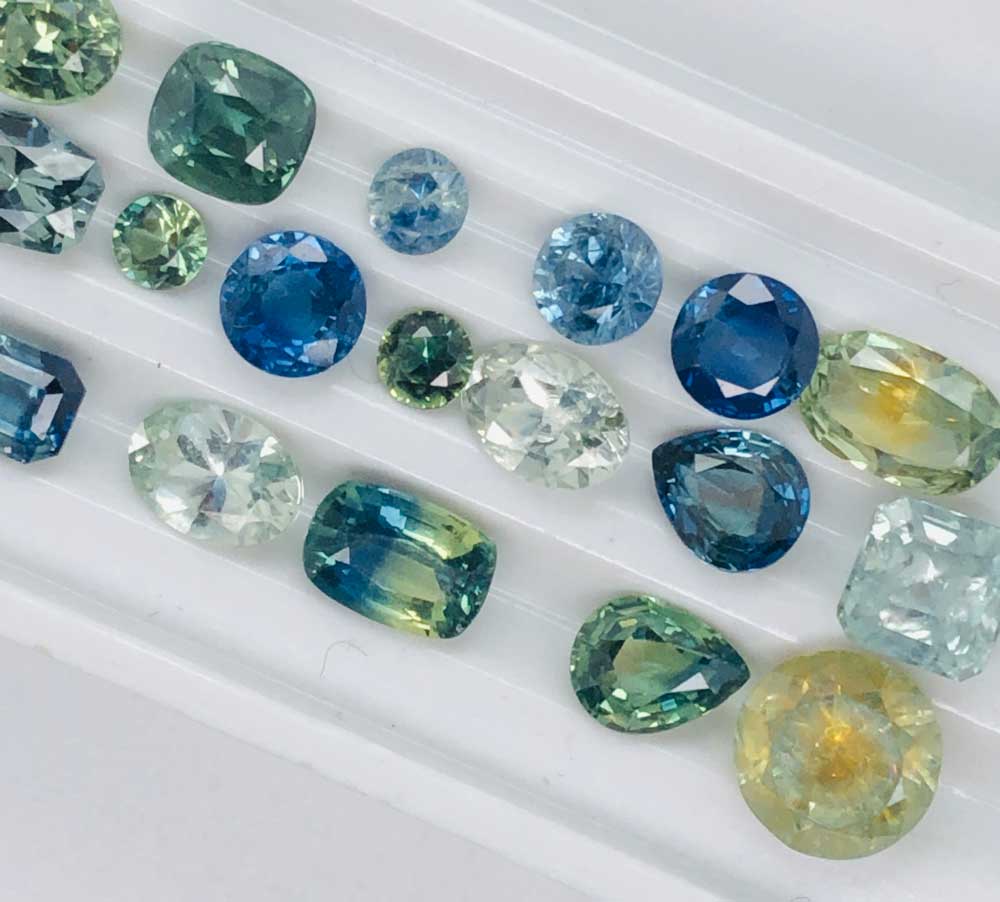
Part of Diana’s collection of stacking rings, this ring features a 1.4ct forest green Montana sapphire deep as the alpine woodlands of the “big sky” state, flanked by chocolate diamonds and set in 18kt yellow gold.
Pair it with rings you already have or add one of Diana's hammered stacking rings to create a set that reflects your vibe.
In my last newsletter, I wrote about Burmese sapphires and their legendary beauty. I’ve created a new series called “Inner World” so that you can see what makes these stones so special. Most Burmese are not heat treated and this letter explains what goes on inside a stone when it comes to us straight from the ground after faceting. (Most other sapphires receive heat-treatment, which is commonly used to dissolve internal inclusions and enhance color.) There are no heat-treating facilities in Burma as of this writing, so when we are presented with a Burmese stone, we see, through its inclusions, all the ways in which it formed over millennia.
This “Inner World” series will cover the presence of inclusions in colored stones and diamonds. Informed purchasing benefits you and, besides, the existence of natural growth indicators over millennia is just cool. Unheated sapphires and rubies are rare in the jewelry world and their value rises accordingly. My clients generally embrace the existence of inclusions and love the fact that nothing, but faceting has been done to their stone. Many of the inclusions are downright beautiful in their own right.
First, a common misnomer that needs to be cleared up. An inclusion in a gemstone is not a “flaw.” Rather, inclusions are natural indications of the gem’s growth over millions of years and their presence allows us to identify them correctly. Inclusions confirm the species of gem (Sapphire? Garnet? Peridot?) and sometimes, the geographical origin. The latter can be very important. To be clear, however, some manufactured gems contain inclusions and sometimes, it takes a trained gemologist with high-level equipment to differentiate natural from lab grown. That’s what you hire me for when we are going into the market to buy you something special. The diamond industry has educated the public to put a premium on brilliance. However, inclusions are omnipresent in natural diamonds.
For instance, the popularity and public awareness of diamond grade criteria, most particularly “color” and “clarity” have educated the buying public to the visible existence of micro-crystals and growth markers. To be sure, value is affected by how visible these inclusions are and how they affect light transmission in your diamond A trained jeweler-gemologist can help you find a stone that is bright and lively, despite internal inclusions. When shopping for diamonds, we explore a series of stones and choose the one that gives the most value for your budget. It’s a delicate balance, but the world is full of beautiful stones that each have a singular reason for their beauty. Like people. The same is true for colored gemstones, although we are less obsessed about clarity and more tuned into color.
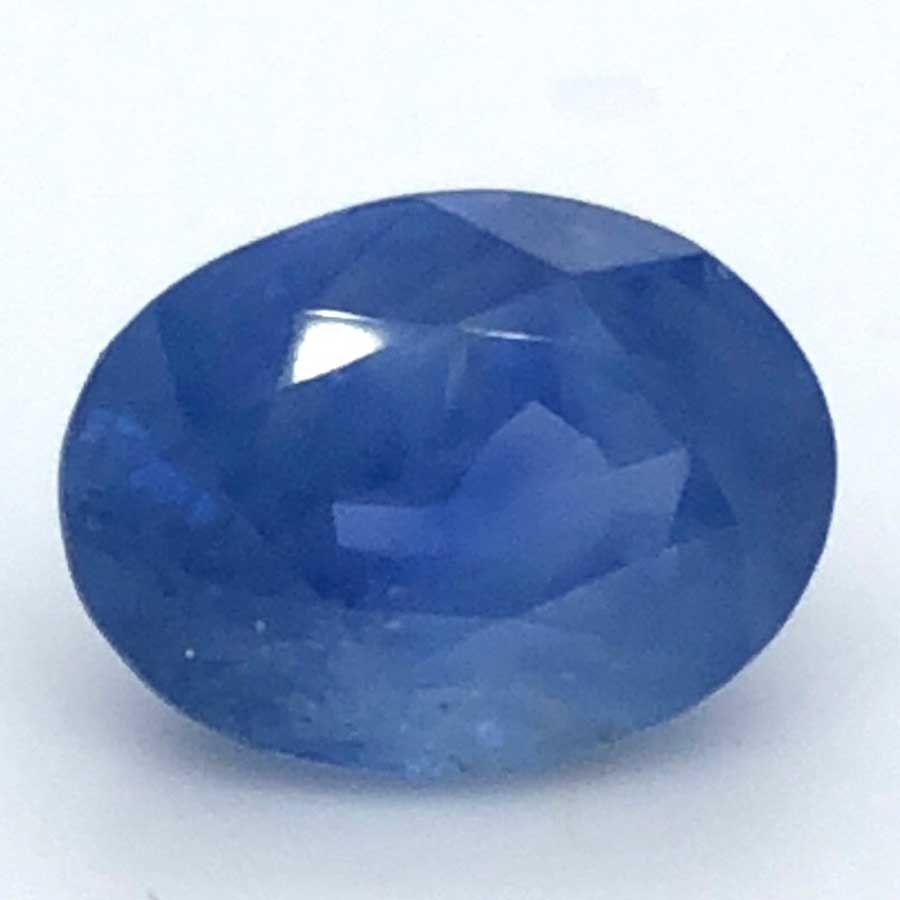
Recently Sold
Let’s talk about what we call “silk” in sapphires and rubies. Silk is actually a system of tiny, needle-like platelets that float in sapphire. Under the microscope, they appear like gossamer clouds, and lattice. The existence of silk proves that a stone has not been heat treated, which is desirable in the marketplace. Silk also allows the purity of the stone’s color to consolidate and send back to us a deeper, rich hue.

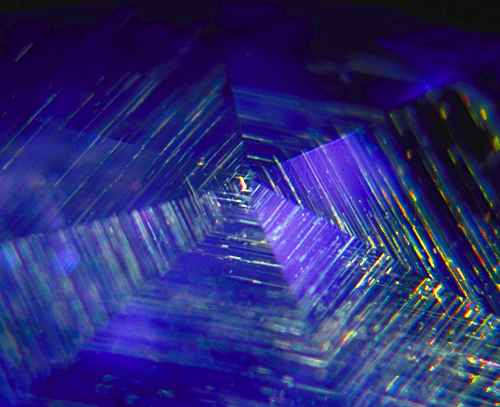
A modern take on a timeless classic, gray spinel, blue sapphire, and white diamond pendant will become a future heirloom. Its filigreed back means it can be worn backwards or forwards. This versatile piece is made to wear anywhere, any time, with any style. Pendant is on an adjustable chain 16" – 18" long.
Since you all like this series so much, I thought I’d dive into blue. As you can see from my inexhaustive list above, this could get me into treatise territory. Research by the Crayola Company, college professors and others have shown time and again that blue is our favorite color. They believe our blue love comes from clear skies and oceans, two inspiring features of Earth. Generally, our favorite colors are hues we associate with positive emotions or beautiful things from Nature. I’m not sure why the expression “feeling blue” means we are sad if we love blue so much, but onward.In Renaissance art, blue was associated with spirituality and the Heavens (there’s that sky again.) In the history of art, blue pigment was unavailable until, 6,000 years ago, when lapis from the Afghani province of Baluchistan was ground into pigment and transported via the Silk Road over thousands of miles. For many years, blue pigment was the most valued resource on Earth. Due to its scarcity, blue ascended to symbolize divinity, wealth, power, and purity. Some well-known painters in different centuries favored blue as a central color: Van Gogh in his “The Starry Night” uses blue to suggest movement of the heavens as a metaphor for the soul. Johannes Vermeer modifies ultramarine to soften the hue into shades likely found in the home. Giotto, covers the ceiling of the Scrovegni Chapel with ultramarine, a lavish use of this costly material.
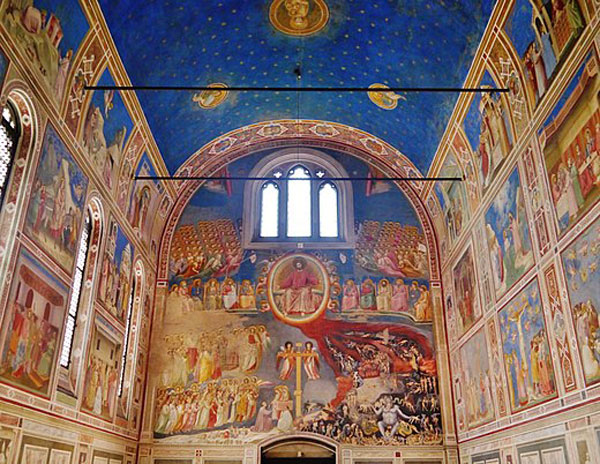
In the jewelry world, blue dominates the preference landscape, too. I mean, who doesn’t love a deep blue sapphire, a watery light blue sapphire or a greenish blue aquamarine? How about blue pearls, the rarest pearl color? Mm hmm… I thought so. Sapphires are loved for many reasons, of course, including durability for daily wear. But I digress.
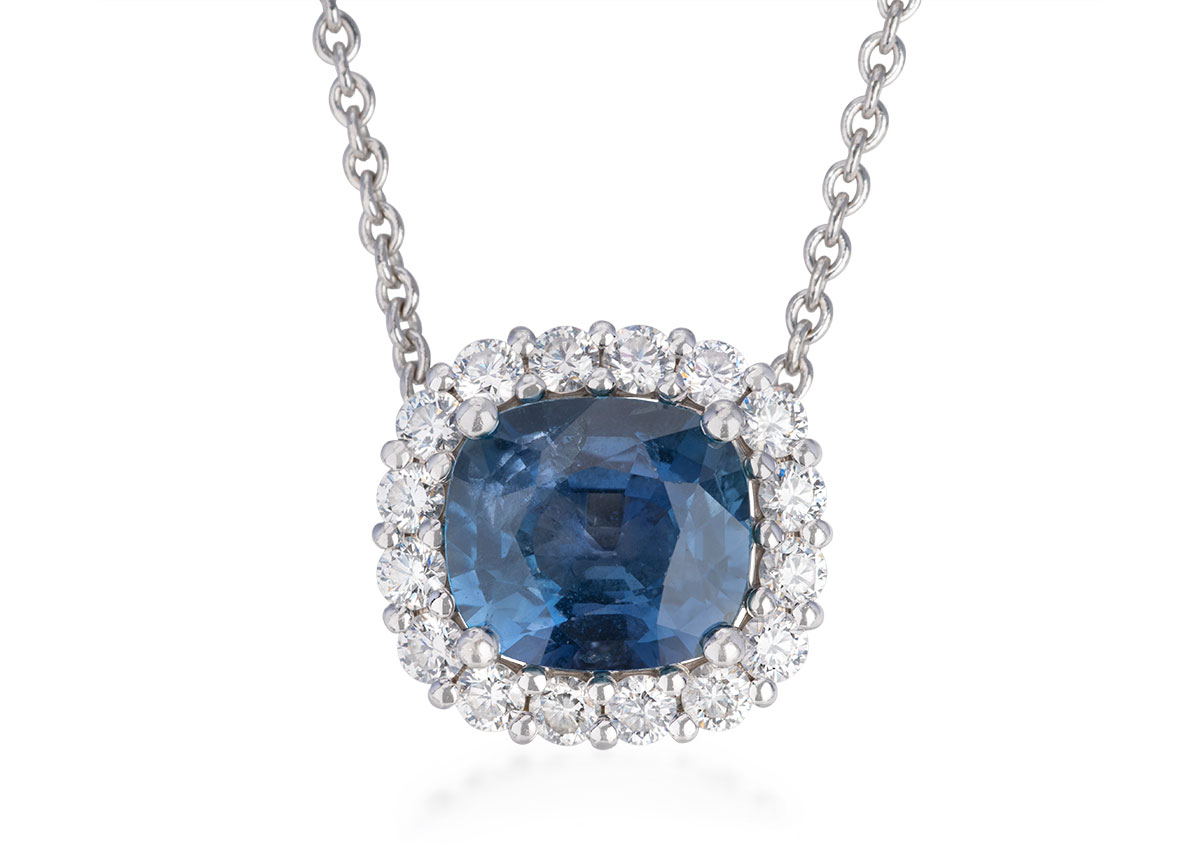
Do you have a favorite blue? I’d love to know.
Stay cozy!
Diana






